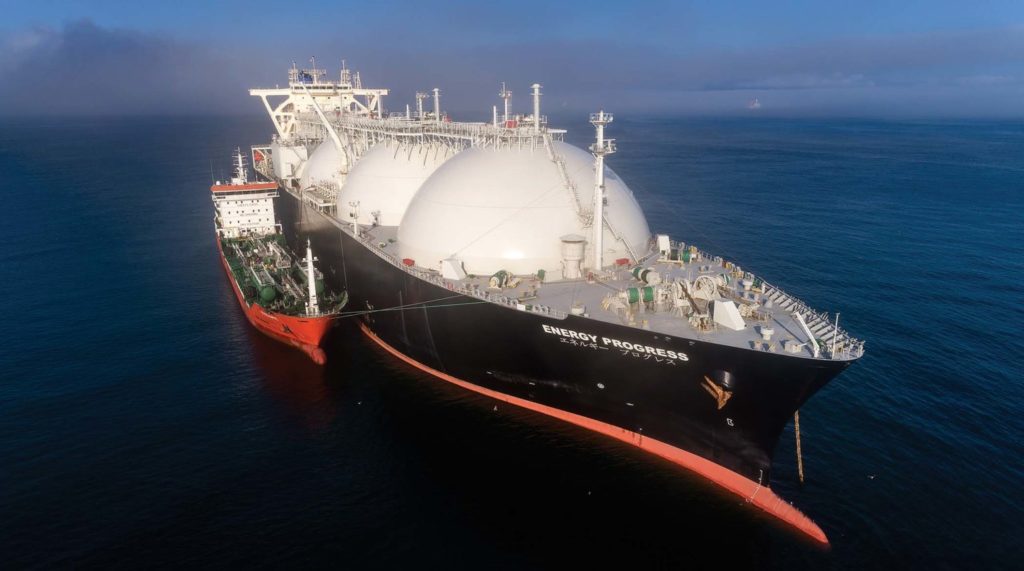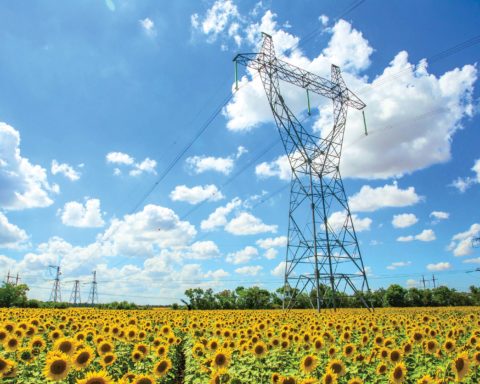Aleksei KULAPIN
Director General of the Federal State Budgetary Institution “Russian Energy Agency” of the Ministry of Energy of Russia, Doctor of Chemical Sciences
Energy transition trend
By itself, the concept of “energy transition” is not new, and it means a structural transformation of the global energy balance with a reduction in the share of a certain type of fuel by 10% over 10 years.
Throughout its history, humanity has already gone through three stages of the FEC transformation: the first was the transition from biomass to coal, the second – from coal to oil, and, finally, from oil to gas. We are now on the verge of the fourth energy revolution, a key feature of which is the increased use of low and carbon-free energy sources, in particular RES. Among the main drivers contributing to the next changes: the desire of developed countries to decarbonize the world economy and their desire to reduce their dependence on energy supplies from abroad.
Last year alone, Bloomberg New Energy Finance (BNEF) estimated total investment in the energy transition at a record 501.3 bln USD. It is noteworthy that among all the countries of the world, the largest increase is accounted for by the European Union: +67% by 2019. Herewith, China and the United States are seeing a 12% and 11% cut in energy transition funding by 2019, respectively.
The largest level of investment fell on the renewable energy sector – 303.5 bln USD. For RES, it is the second-highest funding indicator ever, after peaking at 313.3 bln USD in 2017. Growth in global wind and solar capacity of more than 200 GW per year has already become the new norm. According to the Net Zero by 2050 report issued by the International Energy Agency (IEA) in 2021, in order to achieve carbon neutrality goals, the total commissioning of wind farms and solar power plants should be about 1000 GW by 2030, which is equivalent to the daily installation of the world’s largest solar park. By 2050, about 240 mln solar panels are to be installed on rooftops. For comparison, in 2020 the number of such micro-generation facilities in households was about 25 mln.
An energy transition for everyone?
Leading world experts agree on one thing: in order to achieve the declared goals of decarbonizing the world economy by 2050, the volume of investments in green energy by 2030 should at least triple and amount to about 4 USD trln. Even for developed economies, the announced investment volumes today seem unlikely.
Herewith, the issue of combating energy poverty has not yet been resolved in a number of developing countries in Africa and Asia. The UN estimated that in 2019, about 759 mln people around the world did not have access to electricity. The situation is aggravated by the pandemic of the new corona virus infection COVID-19, the consequences of which could hinder future electrification progress. It is expected that by 2030 another 660 mln people could be deprived of the electricity in the world. Whether such states will be able to afford in the future the next few decades the construction and operation of generating facilities based on RES in the quantities necessary to cover energy needs and ensure economic growth is a big question.
It’s about technology
The main argument of supporters of an early energy transition and a complete rejection of fossil energy sources remains the availability of wind and solar energy almost anywhere in the world.
Along with this, in the current conditions of technological development, the key barrier to the expansion of the use of renewable energy is the instability of generation associated with the variability of weather conditions. Energy storage devices are called upon to solve the current situation, which will make it possible to compensate for its shortage during peak consumption hours, during calm periods or in the absence of the sun.
Despite the fact that the development of pilot samples of such storage devices has been going on for a long time, they have not entered industrial use.
Before the advent of energy storage systems, the lack of generation still has to be covered by traditional power plants, which can negatively affect the cost of electricity for consumers.
Another challenge for renewable energy is the lack of effective technologies for the disposal of spent solar power plants and wind turbines. Currently, when the development of renewable energy is only gaining momentum, and the number of components that need to be replaced is quite small, in most cases the issue is resolved by repairing failed equipment and its further resale to developing countries. But after a couple of decades, the question will rise squarely. According to BNEF, in Europe alone by 2038, the volume of spent blades of wind power plants will reach 300 thousand t, and the number of photovoltaic modules requiring processing by 2050 worldwide will reach 78 mln t.
The need for further development of renewable energy technologies is recognized in the Net Zero by 2050 report. Herewith, the IEA notes that the largest reduction in greenhouse gas emissions by 2050 is associated with the development of technologies that are today at the level of prototypes, and their commercialization will require a massive deployment of all resources available today.
Energy security in the lead
The energy transition cannot be ignored. However, it must be remembered that the primary task of the global fuel and energy complex is the uninterrupted supply of people with affordable and reliable energy resources.
Until renewable energy is able to fully meet the growing needs of the world’s population, traditional energy will continue to dominate the global economy.
Along with forecasts of carbon-free development, the IEA also has more conservative scenarios in which oil and gas consumption continues to grow until 2040.
Fossil energy sources can also be environmentally neutral, taking into account the development and application of modern technologies for capturing and utilizing emissions, and the adoption of measures to adapt to climate change will ensure the necessary level of environmental safety during their extraction and transportation.
Herewith, the leading role in the energy sector of the future will be assigned to natural gas, including LNG, as the most environmentally friendly source of energy. According to IEA forecasts, its global consumption may grow by 2 items, i.e., to 25% by 2040.
Hydrogen energy can become another transitional source of energy. And although today there is no consensus among world experts about the potential volumes of the world market for hydrogen, the range of estimates of global demand for it by 2050 ranges from several tens of millions to almost 700 mln t/year.
There are currently about 200 hydrogen projects in the world along the entire value chain. If all of these projects are implemented, the Hydrogen Council & McKinsey predicts that total investment in hydrogen by 2030 will exceed 300 bln USD, equivalent to 1.4% of global energy funding.

Source: vladsv/Depositphotos.com
Russia in energy transition
Despite the wealth of our country in hydrocarbon energy sources, Russia supports the aspirations of the world community to combat climate change. In 2016, the Russian side signed and adopted the Paris Agreement in 2019, and as part of its implementation in November 2020, the President of the Russian Federation issued a decree on reducing greenhouse gas emissions.
Already today, more than 80% of electricity generation is based on low and carbon-free energy sources: gas, nuclear and hydroelectric power plants, renewable energy sources. Herewith, the Energy Strategy of Russia for the period up to 2035 provides for further diversification of the energy balance with an increase in the share of “clean” energy in it.
To this end, Russia is building up competencies in renewable energy and developing technologies for the production of hydrogen with an eye to its use domestically and for export supplies, energy storage devices are being developed, energy-efficient practices are being stimulated, and the FEC companies are moving to the principles of the best available technologies.
Last year became unique for our country: for the first time, the volume of commissioning of generating facilities based on solar and wind exceeded the volume of commissioning of traditional generation. To further stimulate the expansion of the use of green energy in early June 2021, the government approved mechanisms to support the industry until 2035.
In accordance with the document, in the period 2025–2035, 360 bln RUR will be allocated, due to which the construction of an additional 6.7 GW of new RES capacity can be provided.
In addition, new rules and principles for the competitive selection of projects have been determined: the most significant of them is the transition from the previously practised selection based on the principle of reducing the declared costs of investors to selection based on the criterion of minimizing complex indicators of the efficiency of RES projects, that is, in fact, from volume constraints. to cost.
New requirements for the localization and export of main equipment within the framework of projects for a RES CSA (renewable energy source capacity supply agreement) are called upon to contribute to the development of domestic renewable energy technologies. These rules will make it possible to objectively assess the quality of products in the relevant industry and provide incentives for them to enter international sales markets.

Source: Hevel
It is envisaged that the implementation of these measures will allow, starting from 2036, to stop subsidizing RES facilities using the mechanisms of the wholesale electricity and capacity market and to make Russian “green” energy competitive in the domestic and world markets.
In order to create legal conditions for the development of microgeneration in the country, a corresponding law was adopted in 2019, establishing key requirements for such generation facilities and giving their owners the right to sell surplus electricity in retail markets.
Another important area of work of the Russian Government is the development of renewable energy. In October last year, a corresponding roadmap was approved aimed at increasing production and expanding the scope of hydrogen as an environmentally friendly energy carrier, as well as joining the country among the world leaders in its production and export.
Potential volumes of hydrogen exports from Russia to the world market, according to expert estimates of the Russian Energy Agency of the Ministry of Energy of Russia, may amount to 10-20% of the international hydrogen trade market, or up to 0.2 mln t in 2024, 2-7 mln t in 2035, and 7.9–33.4 mln t in 2050, depending on the pace of decarbonization of the global economy and growth in demand for hydrogen in the global market.
Strategic initiatives and key measures for the development of hydrogen energy in Russia for the medium and long term are defined in the developed concept for the development of the industry.
In particular, the document provides for the creation of a scientific and technical infrastructure in the country – engineering centres and landfills, the main activity of which will be a full cycle of creating technologies for obtaining, storing, transporting, using hydrogen from the level of scientific research to the stage of their commercialization.
Herewith, one of the primary tasks should be the development of competitive technologies for the production of hydrogen both from fossil raw materials, primarily natural gas, and by electrolysis of water on the basis of nuclear power plants and renewable energy facilities.
Regional clusters, which can be organized with the active participation of centres of engineering and technological competence, will contribute to the creation of export-oriented production of hydrogen and ensure its supply to the domestic market.
Along with clusters for the formation of local markets, it is planned to organize the production of low-carbon hydrogen at export-oriented industrial enterprises that use such fuel in the production process, create test sites for the production and test the use of hydrogen as an energy storage device, prototypes of hydrogen automobile and railway transport, as well as filling stations for them, implementation of pilot projects on the use of hydrogen in housing and communal services, subject to confirmation of their safety and economic efficiency.
An equally important role in the development of hydrogen energy is assigned by the draft concept to the formation of the necessary personnel competencies and the establishment of international cooperation.
Herewith, until the construction of all the necessary supply infrastructure and the reorientation of production, transport and housing sectors for the use of new energy sources, Russia, as one of the key players in world markets and a reliable partner for European and Eastern countries, will continue to develop traditional energy, in particular, natural gas, paying special attention to improving their environmental friendliness.
To this end, work is already underway to improve the indicators of thermal efficiency in generation, to prioritize the use of combined heat and power generation technologies, to reduce methane emissions both during natural gas transportation and during oil production, and to increase the share of associated petroleum gas utilization.
Such a balanced development of the Russian FEC will make it possible for our country to contribute to the achievement of global goals of combating climate change, develop new competencies to enter the world high-tech markets and ensure the energy security of both domestic consumers and foreign partners.







